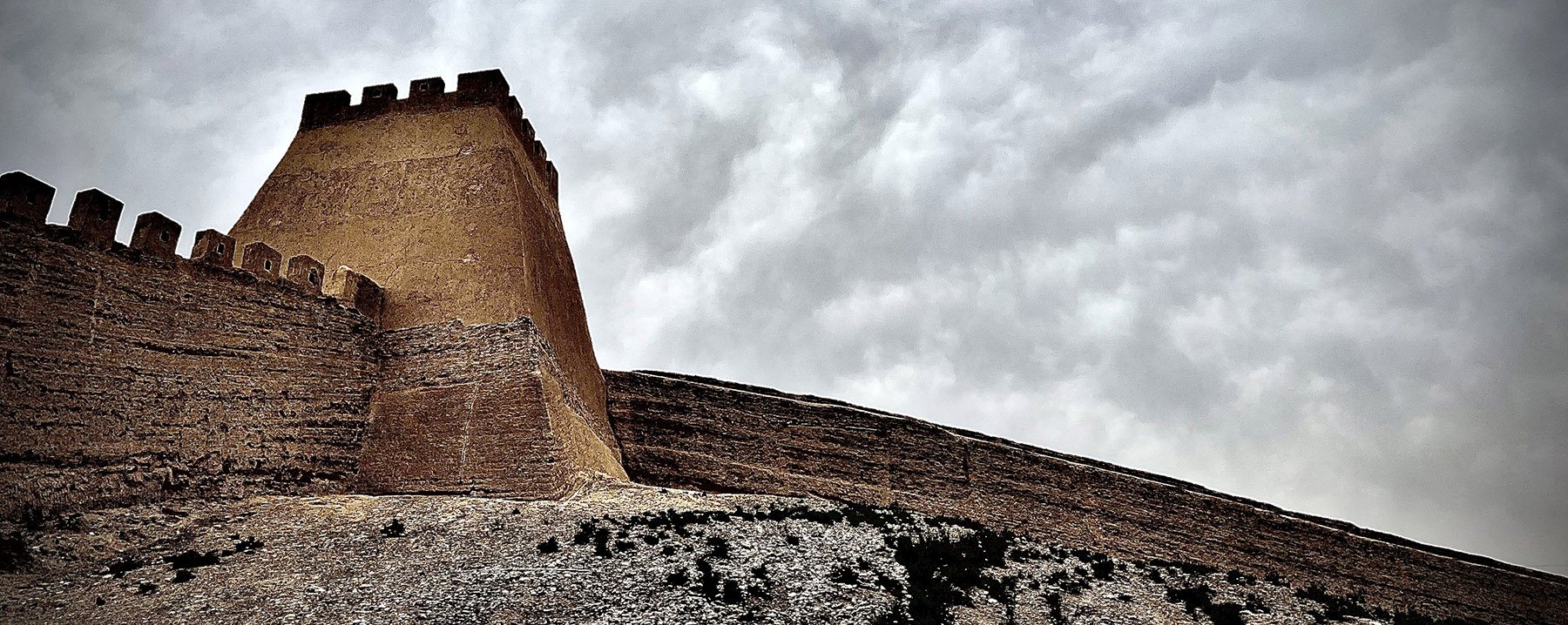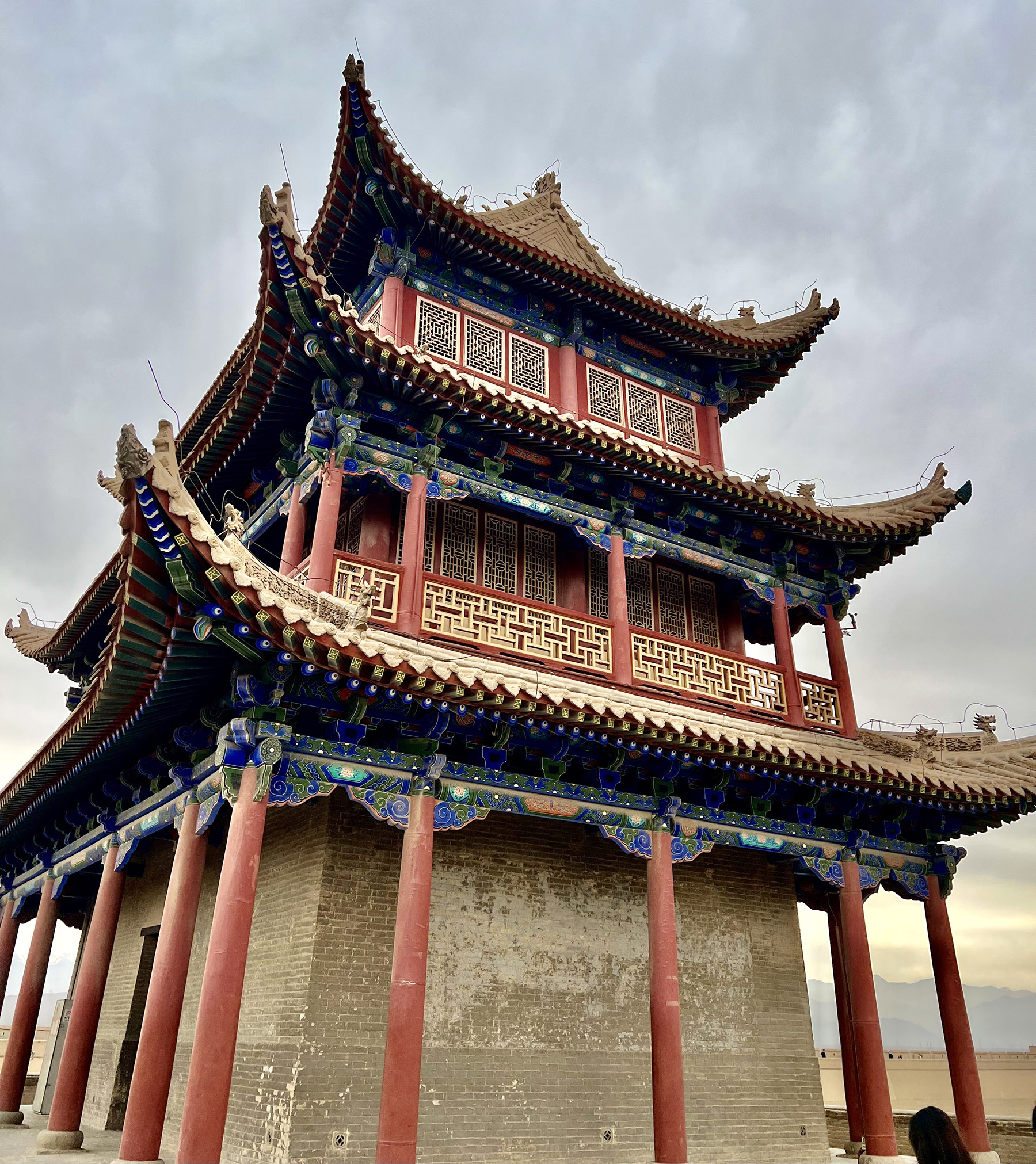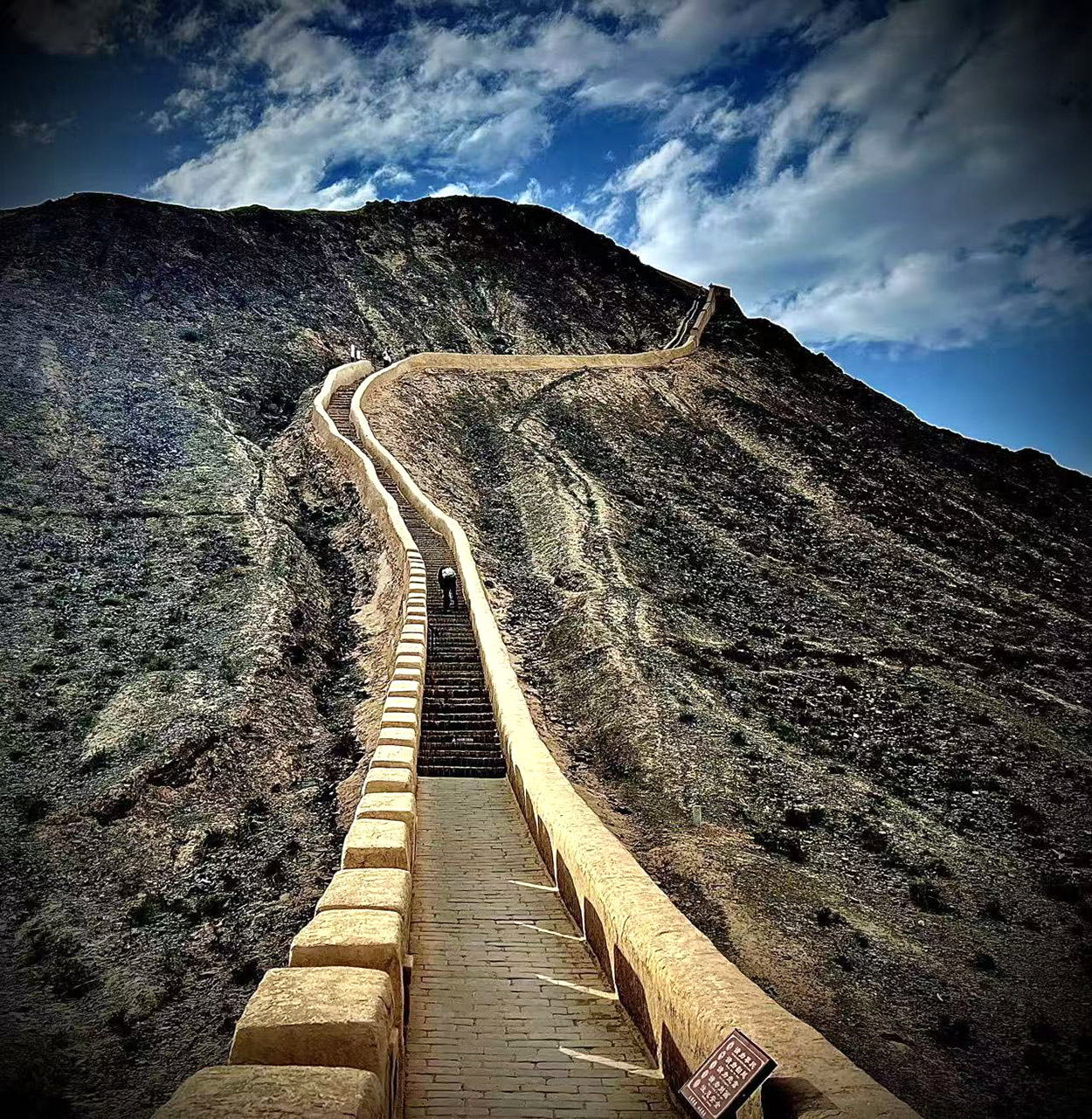Jiayuguan's fortifications safeguard an archaeological and social legacy, whose building blocks are equal parts brick and spirit, Erik Nilsson and Hu Yumeng report.

His life hung on the position of a single brick. The architectural engineer had meticulously calculated that he needed precisely 99,999 blocks to construct the tower at the Jiayuguan Great Wall's main pass. But his boss demanded he use exactly 100,000 — or die.
So, the sly engineer built according to his original plan but, when it was finished, he precariously perched a solitary block atop the tower's narrow ledge. When his commander saw this ostensibly leftover piece, he erupted into a tantrum and declared he'd execute the designer. But the shrewd builder insisted the seemingly useless brick actually braced the entire structure, which might disintegrate into 100,000 pieces if disturbed.
The leader felt incredulous but dared not disturb the brick or kill the engineer — just in case he wasn't bluffing. Otherwise, it might instead be his head on the chopping block.
A replica of this storied slab teeters atop the structure's edge today.
READ MORE: 'Pass'ing on Silk Road rituals
This fable is one of many myths and true tales written in stone at this Great Wall terminus.
Another account says that the bricks were hewn and transported from the Heishan Mountains. A clever old man suggested pouring water on the frozen ground to "pave" slick ice paths along which laborers could slide these hefty rocks to the building site.
Yet another story offers a musical mystery. It says that if you use a small stone to tap a special rock that rests in a corner of the Jiayuguan Pass, it "sings" like chirping birds. This phenomenon harks back to a fairy tale about a sparrow's sorrow following her mate's death. Historical records suggest soldiers' families would strike it when they marched out to battle to wish for a safe return.

Such stories tell us how Jiayuguan's real legacy extends beyond archaeology and history to encompass the legendary and lyrical.
It's called the First Pass Under Heaven and the "end of the Great Wall". Its First Beacon Tower is also known as the "dragon's tail". Jiayuguan largely lives up to these nicknames that nod to its alpha and omega position as a sentinel shielding the far edge of the Ming-era Great Wall in the desert of today's Gansu province.
That said, such extravagant appellations are sometimes evocative misnomers that indulge in poetic license. The Overhanging Great Wall section actually slithers up a mountainside rather than protruding over the edge of a sheer cliff. And while Jiayuguan was the wall's westernmost section during the Ming Dynasty (1368-1644) — hence, the "end" — other sections extended farther afield during different periods.
Ultimately, our understanding of this splendid structure at the edge of the ancient empire is built not only on actual history but on a sense of story that stands on the frontier of truth and sometimes sneaks across its borders into the realm of myth.
That's because Jiayuguan's geographic location intersected with its sociopolitical position, mapping a cultural landscape at a coordinate where the longitude of fact crosses the latitude of lore.
Truly, this gateway of the Hexi Corridor — a fertile valley swooping between the Heishan and Qilian mountain ranges — was busiest during the Silk Road traffic peaks of the Han (206 BC-AD 220) and Tang (618-907) dynasties. It was traversed by officials, warriors, monks and traders of various ethnic groups.
Even when trade along this route waned in later periods, the reduction was relative. Many of the remaining Ming-era flagstones are grooved by the thousands of wheels that rolled atop them and ultimately ground into them over the centuries.

In addition to repelling invaders, Jiayuguan also welcomed travelers from abroad and operated as an immigration and customs center.
The remnants of the 44-kilometer Ming bulwark in the modern city feature 89 ruins — 26 walls, 19 defense and 30 beacon towers, six trenches, and eight passes and forts.
Narrative displays and 250 artifacts at the Jiayuguan Great Wall Museum elaborate on this heritage.
These objects tell the stories of the guards stationed at this remote outpost hundreds of years ago. They were literally born for the job, since they were conscripted from designated "military families", who were required to provide their sons for armed service.
Actually, most of these soldiers were mainly farmers.
ALSO READ: The Great Wall of man and nature
Jiayuguan's location was strategically selected not only because it optimized border defense but also because its oasis enabled frontier guardsmen to sustain themselves by planting crops and raising livestock in the otherwise dusty badlands. During peacetime, roughly 70 percent of them produced food while the rest engaged in defense work.
This synthesis of functions literally shaped the land, as the springs fed both defensive moats and irrigation channels.
In addition to basic combat, fighters learned such specialized skills as raking sand to detect footprints, inserting sharp sticks into the ground to impale enemy horses and crushing dried dung into dust to fling into foes' eyes.
The garrisons these soldiers guarded centuries ago now guard their stories.
They no longer stand at the frontier of nations but extend beyond the borders of boundless global imagination.
Contact the writers at erik_nilsson@chinadaily.com.cn


